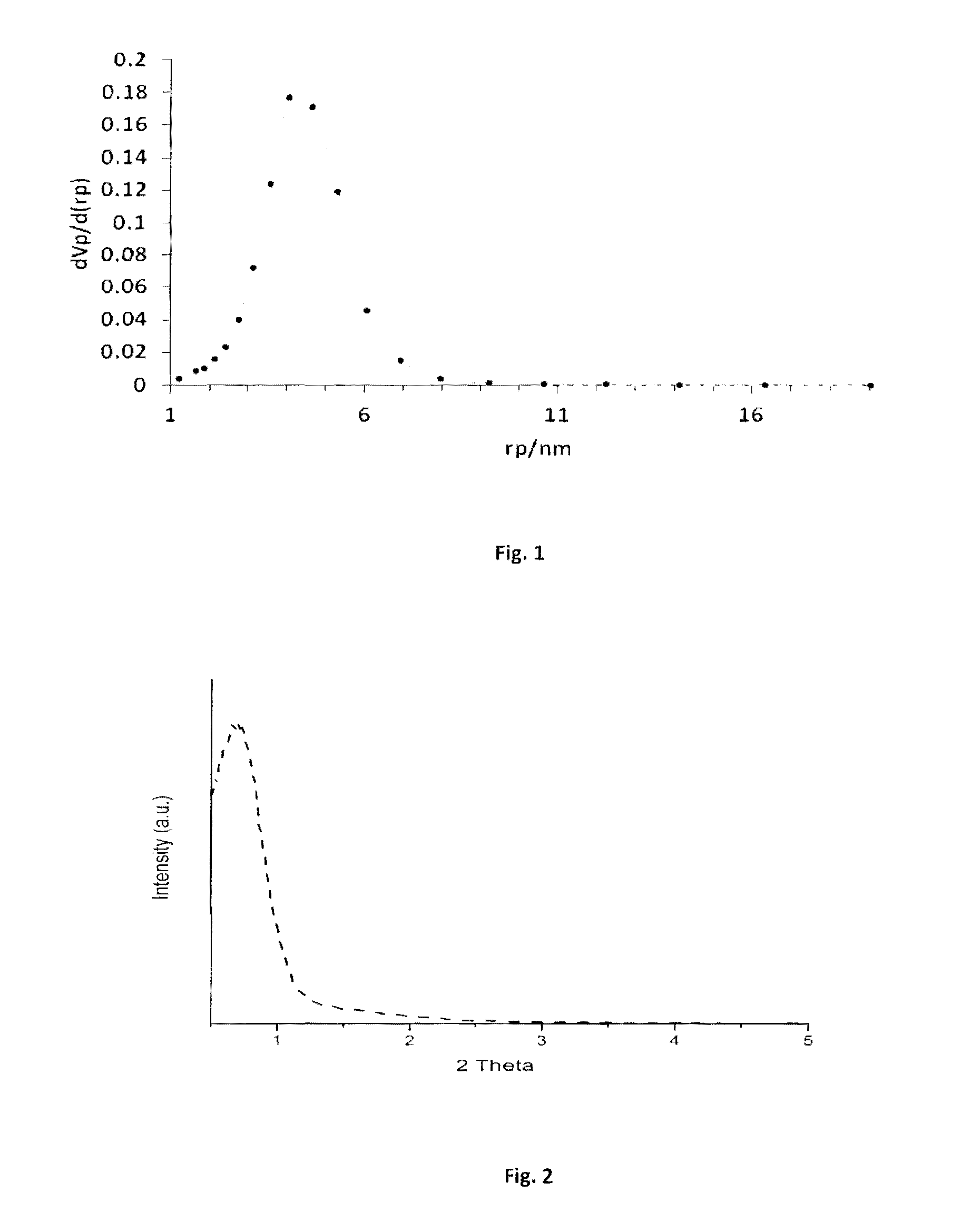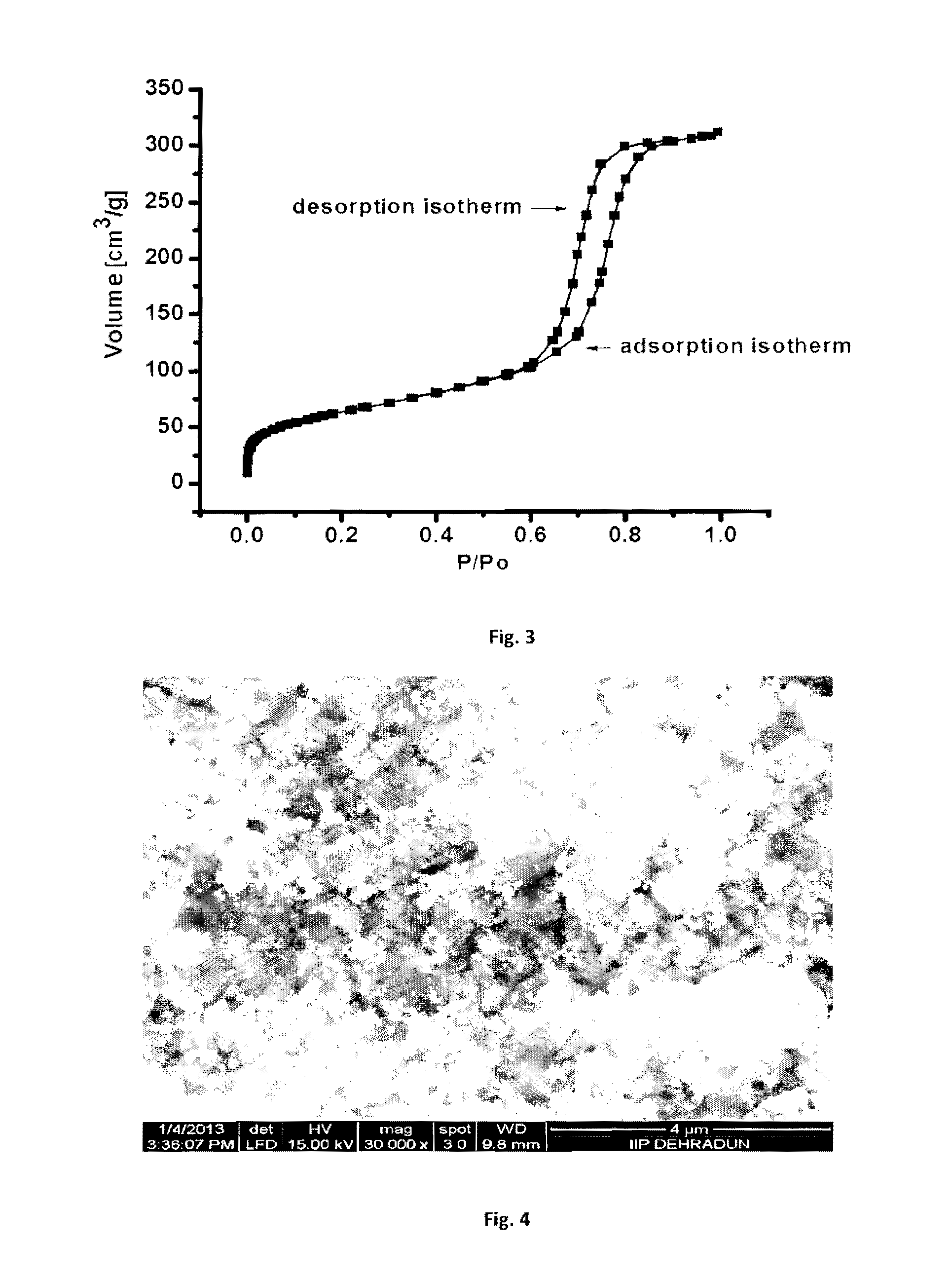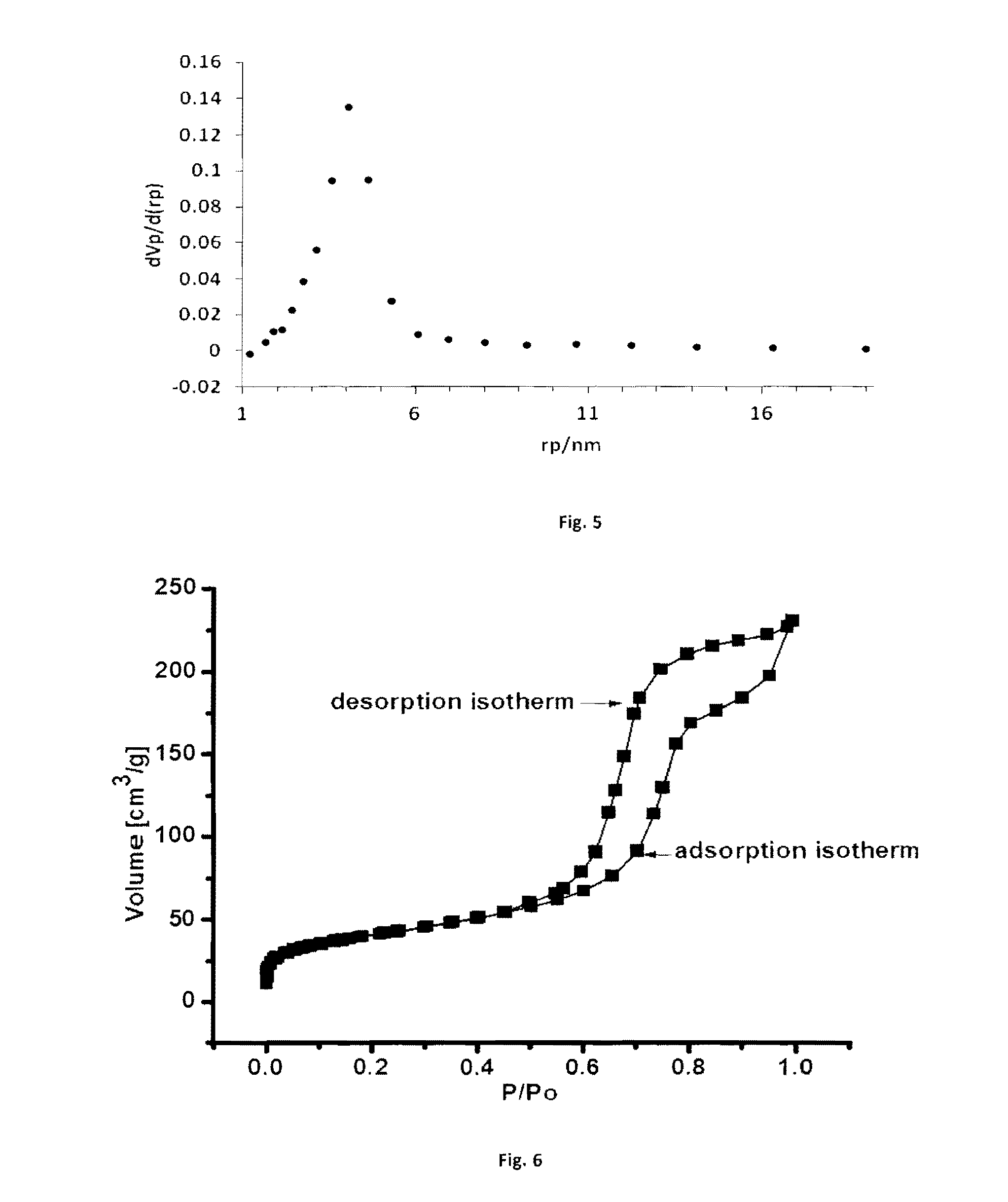Process for the preparation of phosphorous containing mesoporous alumina catalyst for selective dehydration of methanol to dimethyl ether
a technology of mesoporous alumina and phosphorous, which is applied in the field of process for the preparation of phosphorous containing mesoporous alumina catalyst for selective dehydration of methanol to dimethyl ether, can solve the problems of higher carbon emissions of alternative oil-derived fuels, higher carbon emissions of alternative fuels, and associated environmental costs
- Summary
- Abstract
- Description
- Claims
- Application Information
AI Technical Summary
Benefits of technology
Problems solved by technology
Method used
Image
Examples
example — 1
EXAMPLE—1
[0044]A typical synthesis procedure for the preparation of P / Al2O3 (P / Al=1) takes place as follows. Anhydrous Aluminum isopropoxide (4.1 g) was dissolved in 30 ml ethanol and 4 ml of concentrated nitric acid and phosphoric acid 1.2 ml was added into it. Finally 10 ml of ethanol was added again to the solution and kept for 10 h under vigorous stirring at 25° C. A second solution containing Poly(ethylene glycol)-block-poly(propylene glycol)-block-poly(ethylene glycol) (P123) 2 g was dissolved in 50 ml of ethanol. Two solutions were mixed and stirred for 3 hours for homogenation and kept for drying slowly at temperature 80° C. for a period 18 hours. The obtained material was calcined at 700° C. for 6 h.
[0045]The material was characterized using X-ray diffraction (XRD), Scanning electron microscopy (SEM), Nitrogen physisorption analysis. The adsorption isotherm for the P / Al2O3 catalyst found to be type IV with mean pore diameter 4 nm (FIG. 1) hysteresis curve of type H1 reveal ...
example — 2
EXAMPLE—2
[0046]A typical synthesis procedure for the preparation of P / Al2O3 (P / Al=0.5) takes place as follows. Anhydrous Aluminum isopropoxide (4.1 g) was dissolved in 30 ml ethanol and 3.5 ml of concentrated nitric acid and 1 ml phosphoric acid was added into it. Finally 10 ml of ethanol was added again to the solution and kept for 10 h under vigorous stirring at 25° C. A second solution containing Poly(ethylene glycol)-block-poly(propylene glycol)-block-poly(ethylene glycol) (P123) 2 g was dissolved in 50 ml of ethanol solvent. Two solutions were mixed and stirred for few hours 3 hrs for homogenation and kept for drying slowly at temperature 60° C. for a period 48 hours. The obtained material was calcined at 700° C. for 6 h.
[0047]The material was characterized scanning electron microscopy (SEM), Nitrogen physisorption analysis. The adsorption isotherm for the P / Al2O3 catalyst found to be type IV with mean pore diameter 4 nm (FIG. 5), hysteresis curve of type H1 reveal that the of ...
example — 3
EXAMPLE—3
[0048]This example describes the vapour phase dehydration of methanol by vapour phase reaction, He as carrier using different Al to P ratio of the catalyst. (Table-1)
[0049]Process Conditions
[0050]Catalyst: 0.15 g
[0051]Pressure: 1 atmosphere
[0052]Total flow=1 ml / min (LHSV=6.66 ml g−1 h−1)
[0053]Reaction time: 1 h
TABLE 1MethanolDMECatalystTemperatureConversionSelectivityYield(P—Al2O3)(° C.)(Mol %)(%)(%)Al:P 1:13009410094Al:P 1:0.5300369535
PUM
| Property | Measurement | Unit |
|---|---|---|
| Temperature | aaaaa | aaaaa |
| Temperature | aaaaa | aaaaa |
| Temperature | aaaaa | aaaaa |
Abstract
Description
Claims
Application Information
 Login to View More
Login to View More - R&D
- Intellectual Property
- Life Sciences
- Materials
- Tech Scout
- Unparalleled Data Quality
- Higher Quality Content
- 60% Fewer Hallucinations
Browse by: Latest US Patents, China's latest patents, Technical Efficacy Thesaurus, Application Domain, Technology Topic, Popular Technical Reports.
© 2025 PatSnap. All rights reserved.Legal|Privacy policy|Modern Slavery Act Transparency Statement|Sitemap|About US| Contact US: help@patsnap.com



